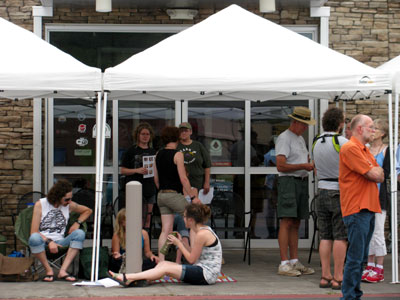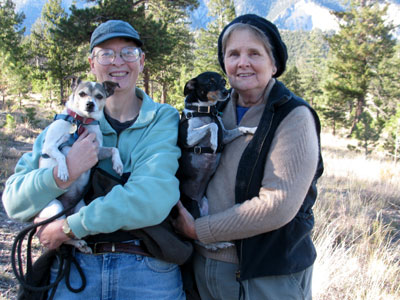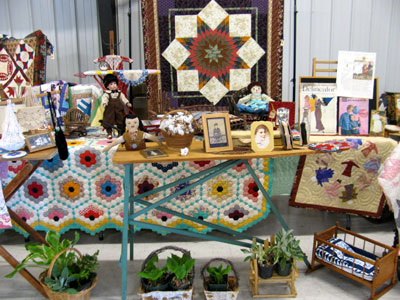
Ozark Natural Foods, our coop, was shut down by striking employees on June 11! Yes the doors are locked on a Monday morning!
“Closed until further notice,” the voice on the answering machine for ONF informed me! The staff of Ozark Natural Foods was on strike demanding the resignation of two of the board members who have in recent months participated in firing Alysen Land, long time general manager, attempted to change bylaws and hired an unscrupulous lawyer. Gumption and grit fueled their actions! Many of the staff had sent letters and signed a petition in support of the general manager, and voiced their opinions at board meetings and owner meetings. Most all of the staff are also vested owners of the coop and believe strongly in the cooperative model of doing business.
These women and men were as frustrated as I have been in trying to communicate our desires to the seven people on the board of directors of ONF. This new board (seated in April, 20012) has been dealing with trying to fix the poor decisions of the previous board. (Note: five of the board members are holdovers; two are newly elected including the president.)

Staff members carried signs expressing their demands to the board.
After the last ONF’s owner’s forum on June 2, I wrote this to a friend:
“The board has, in fact, set itself apart from the member/owners. It all feels very patronizing–the board seems to believe they must hoard information and make the decisions for the peasant membership–all the while hiding behind “legal vulnerability”. (Remember the legal system is set up to protect the status quo, and those in power benefit most from the legal system.)Delay, postpone and stall seems to be working! The situation seems very discouraging–unless someone takes up the banner and does protests outside the store or something.”
Bold action!
Well, someone did take a bold move–the staff closed the store! In the letter posted on the ONF website and in the flyer handed out in front of the store, the staff described their frustrations and their demands of the board. Sixty staff voted on Sunday, June 10 to close the store and to hand out information on Monday to all who came to the store (see a copy of this letter below). They announced their intentions to the media on Sunday evening. The interim general manager Mike Anzalone, who worked under Alysen Land as store manager, was one of the strikers.
Monday morning was bright and sunny. The staff erected four ONF tents to shield them from the blazing sun and from the rain predicted later in the day. The tents lent a festive feel to the somber, yet determined, action these women and men chose to take believing they were acting in the long-term best interest of their coop. I agree. Their letter lists no demands for raises or improved working conditions. Arkansas is not a state known to be sympathetic to the needs of employees. And these workers did not even have the protection of a union. Each of the staff took a personal risk because they believed the board was not hearing the voice of the owners and the staff.

Dialogue between ONF staff members and concerned shoppers.

President of the Board of Directors, Joshua Youngblood, (on left) talking to staff members before the Monday afternoon meeting to discuss the demands of the striking workers.
Early Monday when we heard about the strike, Jeanne and I headed to town. We had been to board meetings and owner forums. We created a handout in May and passed it out to other shoppers–one of these is still on the bulletin board. I called everyone I can think of to ask them to email the board. All this seemed futile, until the employees united and made their strong voices heard.
We talked to the strikers and listened to their stories. I also spent about two hours talking to shoppers and owners who came to ONF. I explained that as a long-time owner, I had gone to the meetings, read the previous board minutes for the last year and still felt like I only had a small piece of the puzzle. That’s why you will see me standing with the sign. Most people were supportive and understanding. Some even asked how they could help.
The personal is political and the political is personal!
As an ardent radical lesbian feminist I observed several principles during all this. We know that, “The personal is political, and the political is personal.” I interpret this to mean that each of my personal choices—say to not eat meat—has additional political implications. A vegetarian diet uses far fewer resources to keep this one human alive. Animals will not be mistreated to offer me meat calories. Long-term healthcare costs are generally lower for non-meat eaters, etc. Additionally, all my political choices have personal implications and responsibilities. When I advocate for reducing our carbon footprint as a nation and as a species, it means my personal choices are going to be affected—no more jet plane trips, choosing to live without using air conditioning in my home, etc.

Come sit with us.... It was a long, stressful day for ONF staff who tried to make the best of the situation..
Taking a personal risk of losing one’s job because you believe your risk may correct a political situation in a positive way is a powerful statement. Taking personal power is a heady choice as we have seen in those involved with the Arab Spring uprisings. Exercising personal power is a risk. Collective action can change your world!
Positive outcome
The ONF Board of Directors has not taken retaliatory action (although I have heard that some on the board suggested this). In fact, the board by a four to three vote has chosen to rehire Alysen Land as general manager for the next year! I am pleased. The staff is relieved. However, her boss will be this severely divided board of directors. It will not be an easy year, but if feels like a hopeful move on the board of director’s part. I appreciate each of the directors who voted to hire the best person for this job. Their job has not been an easy one. The next few months will present more challenges. We, the owners at ONF are the only “boss” of the board. We need to be informed and involved in order to keep our coop strong.
I believe the board could benefit from radical feminists’ concept of power. We differentiate between “power over” and “power with”. “Power with” is the essential willingness of people to work together to create solutions to all the situations that face humans. “Power with” models depend on consensus decision-making where the voices and concerns of all are heeded as important and valid. The hierarchy that produces more attention to “prominent citizens” and “powerful men/women” is not reinforced. “Power over” models depend on top down rule-making and depends on fear to keep people in line.
Avoiding a discontented minority
We live in a culture where the “majority rules”. Consensus may take more effort to achieve. But those of us who believe in the consensus model are well aware of the damage the dissatisfied minority usually creates in ongoing disputes where the majority attempts to impose their decision on the others. This is my fear about the current situation with a severely divided board of directors. I know that the current president has made determined attempts to have the board “speak with one voice”. I have no easy answers. My observations are that the current methods of decision-making and communication are not working. Spontaneous cooperation is our goal. Let’s brainstorm about what would help make us all more willing to spontaneously cooperate.

Paula's first strike experience was in 1971 striking as a flight attendant against Trans World Airlines (TWA)--she needs to keep up her striker credentials!
The staff wrote this letter to the public explaining their actions. The letter was posted on the ONF website and passed out during the strike. Many of you may not have had the chance to read it. I value this letter because it is strong, simple and clear.
Letter from the Coop staff addressed to Co-op owners:
We, the staff of your co-op, Ozark Natural Foods will no longer stand by while your voices and the will of the staff remain ignored.
A group of owners asked for a special meeting in order to discuss the conduct of Linda Ralston and Sue Graham. The owners were denied that meeting. The owners chose to meet anyway. Those owners met quorum; voted to remove both board members, and submitted those results to the board of directors. Linda Ralston and Sue Graham remain seated against the will of the membership.
The majority of the staff wrote letters to the board of directors and overwhelmingly signed a petition for the reinstatement of Alysen Land. That request has not been acknowledged.
We, the staff of Ozark Natural Foods, believe that our co-op is in crisis. We will no longer stand by while we are hushed like children and told to be quiet while the adults in the room decide our fate.
As of the close of business on Sunday, June 10, in the spirit of passive resistance, the doors of the co-op will be locked; and before you we will sit down. We refuse to work under these conditions. We refuse to continue as if nothing is wrong, while the basic tenets of co-operation are being ignored. We will fight for the co-operative principles, for transparency, and for the voices of the ownership and the staff to be respected. Because we insist that the vote of the ownership be respected, we sit before you with a single goal:
We demand the resignation of Linda Ralston and Sue Graham.
We believe that it is impossible for our board of directors to carry on a reasonable relationship with this management team, with the staff, and with our ownership until Linda Ralston and Sue Graham resign. We believe that in their absence, Alysen Land will be returned to her postion as General Manager; that John Eldridge will be removed and an attorney who is willing to defend our bylaws will be hired; that our mortgage will be paid in full as we promised the ownership many months ago. We believe that in the absence of Linda Ralston and Sue Graham, our ownership and our community, rather that personal agendas, will once again become the focus of our board of directors.
We sincerely apologize for the inconvenience this will cause to you and to the interruption in your ability to get wholesome food for your families. But we believe that the very nature of co-operation is now in jeopardy. We ask you, our owners, our friends, our family, our community to please sit with us in protest.
We ask that you contact all of our board members and plead for the resignation of Linda Ralston and Sue Graham. We hope for a speedy resolution so we can return to being your community owned co-operative grocery store.
























































